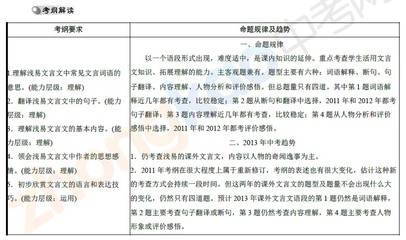Characteristics and Translation ofEnglish Advertisement ABSTRACT
With increasing communication in the world and acceleration ofeconomic globalization, English advertisement has found its wayinto people’s lives. No matter whether we like it or not, we haveto face it. But how to understand, assess and make Englishadvertisement is a challenge to most of us. Under this situation,it is very indispensable to translate the advertisement timely,correctly and efficiently to promote the information exchange bothat home and abroad in order to improve the economicdevelopment.
Advertisement is not only an economic activity promoting salesand services, but also a cultural carrier, which sets greatinfluences on our life styles and consumption habits. And thetradition, belief and value of a culture, to a great extent, affectnot only the psychology and behavior of both producers andcustomers, but also the advertisement itself. So, it is veryimportant for us to know the characteristics of advertisement.
Beginning with the nature and characteristics of advertisement,Chapter one introduces definition, elements and classification ofadvertisement. Chapter two introduces language characteristics ofEnglish advertisement, simple sentences, interrogativesentences,imperative sentences,conditional sentences andelliptical sentences are frequent used in English advertisement.Chapter three discusses the translation methods of Englishadvertisement, which include: literal translation and freetranslation.
Key words: Englishadvertisementcharacteristics translation
摘 要
随着世界各国交流的日益广泛和经济全球化进程的进一步加快,英语广告已成为人们生活不可缺少的一部分。不管我们喜欢与否,都要和它打交道。如何理解,评估并创作英语广告,这对我们大多数的人来说是一个富有挑战性的课题,在这一种情形之下,广告翻译是不可缺少的,正确效率的翻译促进国内和国际的数据交换和经济发展。
广告是一种经济活动,是对商品和服务的一种促销手段,但广告同时又是一种文化载体,它像是一只无形的手左右着人们的生活方式和消费习惯。广告文化具有明显的大众性、商业性、民族性和时代性的特点。一定的文化传统、信仰和价值观在很大程度上左右着商业经营者以及消费者的心理和行为,进而影响广告活动本身。所以,了解广告的特征也非常重要。
本文将从广告的本质与特征入手,第一部分介绍了广告的定义,元素和分类。第二部分介绍了英语广告的语言特征。简单句,疑问句,命令句,条件句和省略句通常被用于英语广告当中。第三部分主要讨论了英语广告的翻译方法,它包括直译和意译。
关键词:英语广告 特点 翻译
Introduction
In modern society, the newspaper, magazines, TV, radio, networkand some other media show us various kinds of information aboutgoods and services. With the development of our society,advertisements have become an important part of our modern society.Turn on radio, you hear advertisements; turn on TV, you seeadvertisements; skim and scan newspapers, you see alsoadvertisements; even at the doorway you can get advertisements.Advertisements follow you like shadows. And under the trend ofglobalization, English advertisement has become more and morepopular and important for English works as an internationallanguage. Now our country has joined the WTO and more and moreworld famous companies come to invest in China. The trade andproduct exchange between china and other countries increase alot.
Advertisement has entered into every aspect of human life. Everyday, people are exposed to a large number of advertisements nomatter whether they like them or not. But what is advertisement?What elements does an advertisement consist of? How areadvertisements classified? And what is the significance in thestudy of advertisement? These are the questions of which we musthave a good idea before we proceed to explore the language featuresor characteristics of English advertisement.
I overview ofadvertisement
Next paper of this chapter introduces definition, elements andclassification of advertisement.
1.1 Definition of advertisement
In English, the word “advertise” has its origin in Latin,meaning “to inform somebody ofsomething ”, “tobring into notice ”or “to draw attention to something”, etc.Abert Lasker, father of modern advertisement, said thatadvertisement was “salesmanship in print”. This definition wasgiven a long time before the advent of radio and television. In thepast, the nature and scope of advertisement were considerablydifferent from those today. The definition indicates that theultimate objective of advertisement is to sell. Obviously, it isnot an all-round definition for it can not cover alladvertisements.
Definitions of advertisement are many and varied. Anadvertisement may be defined as a public notice designed to spreadinformation with a view to promoting the sales of marketable goodsand services, or defined as a vital marketing tool as well as apowerful communication force. It is the action of calling somethingto people’s attention especially by a paid announcement. Also,advertisement can be defined as a kind of paid, non-personalcommunication through various mass media by business firms,nonprofit organizations, and individuals who are in some wayidentified in the message and who hope to inform or persuademembers of a particular audience.
Although advertisement can be defined in many different ways,the essential points concerning its definition may be summarized asfollows: advertisement is a kind of extensive communication ofinformation usually highly paid for and strongly pursuance innature. Advertisement contains messages or information aboutmarketable products and services, or ideas, norms, and values.Advertisement messages are designed particularly, ingeniously andmeticulously, and are made known through various media to thegeneral public or particular groups of people.
1.2 Elements of advertisement
An advertisement is composed of different components, which areverbal or non-verbal. The verbal components consist of theheadline, sub-headline, the body copy, trademark and slogan. Thenon-verbal elements are made up of illustrations, advertisementmusic, advertisement sounds, color and layout. Each element plays arole in successful advertisement.
However, an advertisement has no need to include all the normalelements. Sometimes, some elements are sufficient. The followingelements are discussed, not because they are more important, butbecause the language features in such elements are more conspicuousand much easier to be noticed by the general public. The purpose ofthe sub-headline is to make the transition from headline to bodycopy. Some headlines need no sub-headlines. The body copy tells thecomplete sales story. The purpose of the body copy is to provideclarification of the headline and proof of claims, point out othercompetitive advantages, and gives the prospective reasons, implicitas well as explicit. A trademark is a sign used by an enterprise oran industry to distinguish quality, specifications and nature ofthe product they produce during the sale. The name of a trademarkoften appears in the headline. The slogan has some similaritieswith the headline. In fact, many slogans are developed from somesuccessful headlines. Slogans are standard statements for salespeople and company employees. Slogans are very common in Englishadvertisement. Many famous brands accompany slogans. Please observethe following slogans:
(1) Things go better with Coca-Cola.
-----Coca-Cola
(2) In touch the world.
----Toshiba
(3) Obey your thirst.
—-Beverage advertisement
The above advertisement slogans accompanied by the respectivefamous brands either directly or indirectly tell us about theadvantages, benefits or peculiar functions of the advertisedproducts.
1.3 Classification of advertisement
Advertisement can be classified into differenttypes in view of the target audience, geographic area, coveredmedia, function or purpose. But all in all, advertisement can bedivided into two types: commercial and noncommercialadvertisement.
Commercial advertisement, which promotes goods, services orideas for a business with the expectation of making a profit, fallsinto three types. The first type is commercial consumeradvertisement, which is directed towards the massive audience topromote sales of a product or service. The second type is known asprestige or good will advertisement, in which the firms advertisenot a commodity or a service but rather a name or an image. Thethird type is industrial or trade advertisement, in which a firmadvertises its products or services to other firms. Industrial ortrade advertisement is most likely to be found in specialized tradejumbles or in the business pages of newspapers. Noncommercialadvertisement is sponsored by charitable institutions, civicgroups, and forms of communication.
II Language characteristicsof English advertisement

The advertisers adopt syntactical devices in most of theadvertisements, which perform the following functions: to arouseattention; to show people the advantages; to arouse interest anddesire; to askfor action. In order to realizethese functions, the advertisers should pay much attention to theselection ofsentence variety, sentence structure,and other grammatical forms. This cheaper concentrates on the majorgrammatical characteristics of English advertisements.
2.1Frequentuseofsimplesentences
Whatever product or service may be advertised, the advertiserusually sets a limit to the length of the advertisement for thesake of space and money. Normally, he or she makes much effort toconvey as much information as possible in most concise and compactmanner. Therefore, simple sentences are frequently used in Englishadvertisements. For example: [3]
IT COMES WITH A CONSCIENCE
Honda has always made good cars. People love them. But with aloved one, things can sometimes get emotional.
Honda understands. And on our own we have set up a third-partyarbitration program with the Better Business Bureau togiveyou extra voice, if you need it. But pleasetalk to your dealer first. And follow the problem-solving proceduredescribed in your owner’s manual.
Our new program will help to resolve product-related questionsabout your Honda. This program is free. Just ask at any Hondadealer for a booklet. Or call 800-521-1613. You see, Honda wantsyou and your Honda to have a long and happy relationship. It’sonly right.
2.2 Frequent use of interrogative sentences
In some English advertisements, interrogative sentences are usedat the very beginning of the body copy so as to hold theaddressees’ attention and arouse their interest. Interrogativesentences often require people to give answers, Interrogativesentences arouse their attention. Interrogative sentences arouseconsumers' attentions at first, and then require them to reflect.For example:
(1) Want to see yourself apart from your peers? (Interviewadvertisement)
(2) Need a cleaner that shines without scratching? (Detergentadvertisement)
(3) How can a magazine be strong regionally if it is not stronglocally? (Asian Weekly Salad advertisement)
(4) Have you driven a Ford lately? (Auto advertisement)
2.3 Frequent use of imperative sentences
As we all know, one of the functions of advertisement ispersuade consumers to take immediate action to buy the product.Imperative sentences are very important and most widely employed inEnglish advertisements because they perform the function of directpersuasion and exhortation. According to statistics, there is atleast one imperative sentence in every four English advertisementtexts. Therefore, frequent use of imperative sentences has become adistinct phenomenon in English advertisements. For example:.
(1) Go ahead, you can rely on us. (Advertisement of insuranceand investment)
(2) Get the feeling! (Advertisement of sport)
(3) Come to where the flavor is. (Advertisement of wan baolu cigarette)
(4) Say yes to life, no to drugs. (No poison advertisement)
(5) Let your child in on a world of wonder: Things ofScience.
2.4 Frequent use of conditional sentences
In English advertisements, conditional sentences introduced byif often occur in the first line so as to strengthen promotion andpersuasion. The conditional sentences can be divided into twotypes: real conditional sentences and unreal conditional sentence.In advertising texts, real conditional sentences are generallypreferred. Let’s observe the following examples:
(1) If you suffer from indigestion, there is something you wantto know. (Advertisement of nutritional food)
(2) Without vitamins, life itself would be impossible.(Advertisement of leechdom)
(3) If you are a wife who believes that the best Home-made Breadis made with good honest plain flour-then this flour, made byMcDougall’s, is the flour for you... (flour advertisement)
2.5 Frequent use of elliptical sentences
Advertisement language must be persuasive and economical. Thisrequires advertisers to use concise and brief language. In otherwords, the advertiser should make great effort to convey thegreatest quantity of information in a most concise manner, whichcalls for simple syntax and terse diction. In order to renderadvertising texts brief, concise and forceful, the copy writernormally makes good use of elliptical sentences. For example:
(1) Deliciously simple. Simply delicious.
Although there are only two simple adverbs and adjectivesrepeated in this advertisement, it is imprinted deeply in thereader’s mind of the characteristics of the food. It is deliciousand convenient.
(2) Canadian Airlines.
A convenient way to Canada
And fast way to the USA
(Canadian Airlines)
(3) Safe. Easy. Quick and with Fun.
(KITCHEN WONDER Vegetable Processor)
Elliptical sentence are likely to render the style more conciseand compact. They are rhythmical and forceful, so they are easy toremember and more appealing to customers.
 爱华网
爱华网

